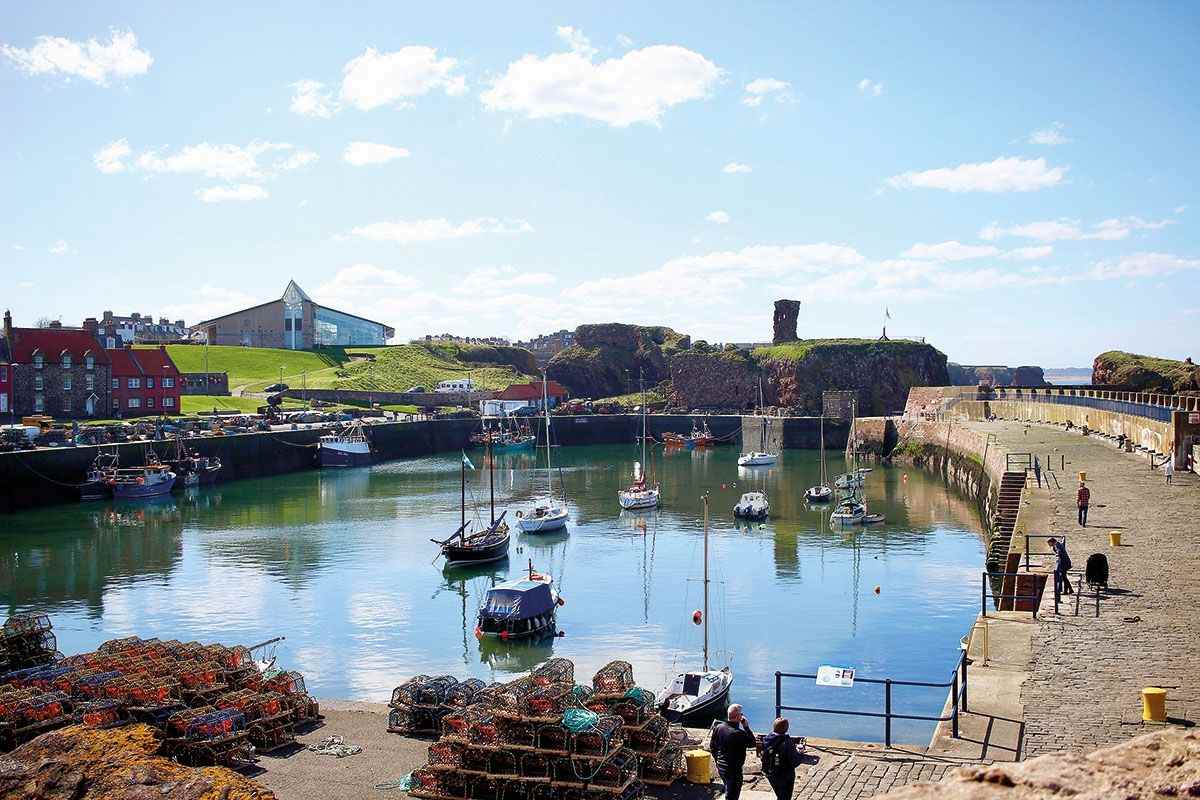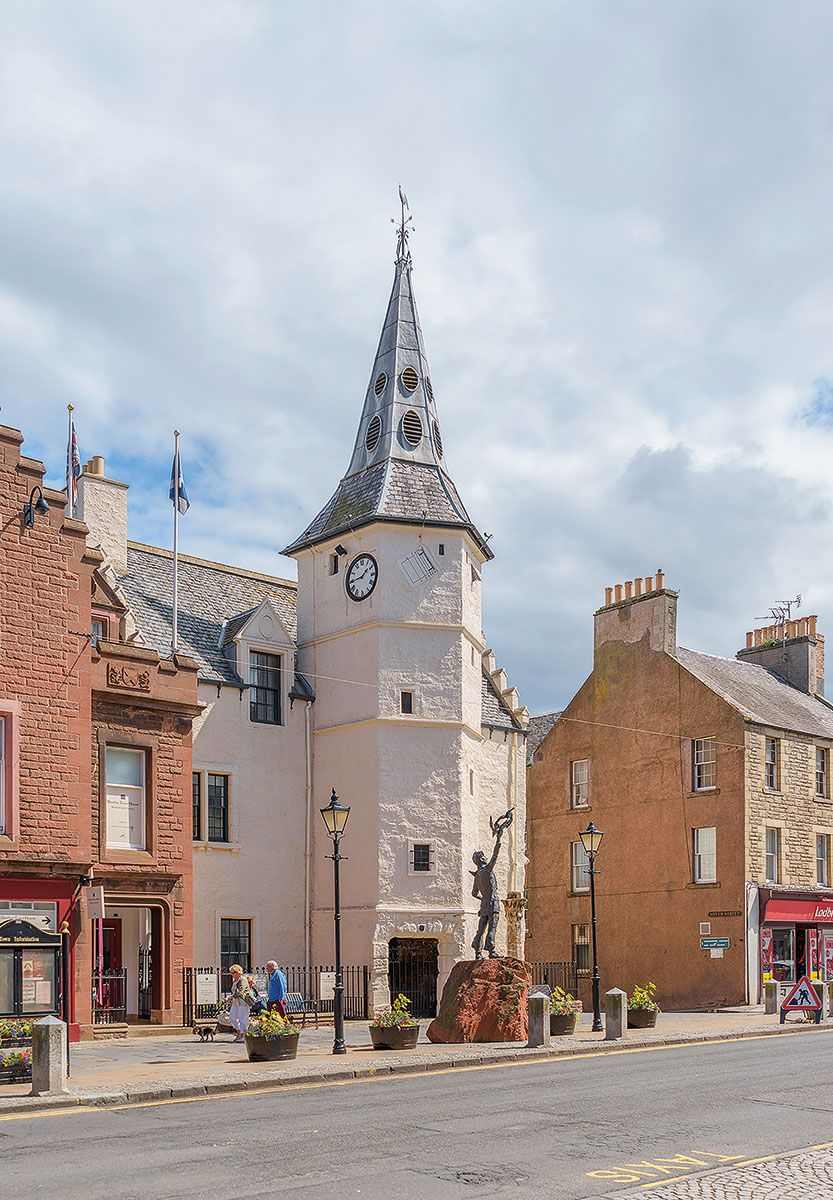
Rory Walsh retraces the footsteps of this renowned naturalist, botanist and explorer, John Muir
Discovering Britain
Walk • Coastal • Scotland • 2.5 miles • Web Guide
Everybody needs beauty as well as bread, places to play in and pray in, where nature may heal and give strength to body and soul alike.’ So wrote John Muir, the explorer, inventor, botanist, and geologist often described as the father of the conservation movement. Though written in 1912, his words are still relevant today. They are perhaps more poignant than ever as people worldwide adapt to life with the Covid-19 pandemic. It’s interesting to imagine what Muir, a restless free-spirited man, would have made of lockdown.
John Muir spent much of his life exploring the American wilderness, especially the Sierra Nevada mountains. At that time, the mid-19th century, the rapidly expanding United States was on the verge of destroying its vast natural landscapes. Muir campaigned to save them and helped to establish the first US National Parks. Along the way he discovered a new species of orchid and worked out the geology of Yosemite Valley. Later, he wrote about his many travels and ideas.
Muir’s likeness has featured on US coins and stamps. Portraits depict his tall frame topped by a long grey beard and wide-brimmed hat. This abiding image of an older man makes it surprising to see a statue of Muir as a boy. Especially in a Scottish high street. Though he is inextricably linked with the US, Muir was born in Dunbar. His statue stands outside Dunbar Town House, thought to be the oldest council chamber in Scotland.
Dunbar grew through its strategic coastal location between Edinburgh and Newcastle. In centuries past, Scottish, English and Viking forces all fought to control the town. During the Napoleonic Wars, it was an army recruiting centre. ‘Muir grew up in Dunbar because of the army,’ explains Martin Haslett, this walk’s creator. ‘Muir’s father was a British Army sergeant stationed here in the 1820s.’

Haslett is a Fellow of the Royal Geographical Society and a retired town and country planner. ‘I am also a conservationist’, he explains. ‘In my work, I helped to protect the countryside from development. John Muir is very important to me. I created this walk so more people could find out about him.’ In 2014, the centenary of Muir’s death, Haslett and I tested the route for the Discovering Britain website. Sadly, travel restrictions mean we are unable to revisit for this article. Following the walk virtually however still offers an informative and enjoyable journey through Muir’s life.
The journey begins at a modest whitewashed house, where Muir was born in a downstairs room in 1838. In 2003 the building opened to the public as The John Muir Birthplace Museum. The museum is run by the John Muir Birthplace Trust, who have restored the building to how it would have looked in Muir’s infancy.
Muir’s parents had a successful grain business. This allowed them to buy a larger house next door. There, John and his brother David ‘practiced mountaineering’ by climbing out of their bedroom window and onto the roof. Throughout the walk, Muir’s early exploits foreshadow his later activities. As a boy John Muir enjoyed exploring his surroundings. A favourite place was the harbour. ‘Dunbar’s location made it an important fishing town, particularly for herring,’ says Haslett. ‘It was so busy that the harbour was expanded when John was four years old.’ In Muir’s time, hundreds of fishing boats would have crammed inside. Despite this colourful flotilla, Muir’s eyes were drawn to the gnarled clumps of rock above the harbour entrance. When recalling his childhood haunts, he claimed ‘best of all were the hoary ruins of Dunbar Castle’.
Dunbar’s name comes from the ancient Celtic ‘dyn barr’, or ‘fort of the point’. The castle can be traced to around 1075, when King Malcolm III granted the land to the future Earls of Dunbar. In 1567 the castle was destroyed after Mary, Queen of Scots was deposed. The abandoned tower now resembles a giant sandstone fish finger, battered by centuries of wind and rain. The ruins are dangerous, so access is banned. Muir however often clambered around the site, despite the risk of falling into the sea.
Past Dunbar Castle, the walk follows the coastal path to the John Muir Country Park. On the horizon, the humped form of the Bass Rock emerges like a friendly whale. As the route weaves along the coves and headlands, the stops act like stepping-stones across the Atlantic. Especially in the afternoon sun, it’s possible to imagine Dunbar’s red cliffs could be in America. Muir wrote that his first sight of Florida ‘suddenly conjured up Dunbar, its rocky coast, winds and waves […] dulse and tangle, long winged gulls, the Bass Rock in the Firth of Forth’.
When Muir was 11, his family emigrated to Wisconsin. They began their new life in the New World as farmers. Muir invented machines to help with the work, including one to get him out of bed. His inventions earned him a place at Wisconsin University but when the American Civil War broke out, Muir left academia ‘for the University of the Wilderness’. After two years in Canada, he joined a factory in Indianapolis where a work accident left him temporarily blind. As Muir’s eyesight returned, he vowed to study nature.

Following his famous 1,000-mile walk from Louisville to Florida, he travelled to Yosemite in California. Yosemite Valley became the focus of Muir’s life and work. He got a job there as a shepherd to study the flora and fauna. He wrote journal articles on his findings and campaigned to protect the area. Muir’s efforts meant Yosemite was designated as a National Park in 1890. Two years later he founded the Sierra Club, which remains an important conservation group.
By the 1900s Muir was a respected public figure in the US and friends with the president, Theodore Roosevelt. ‘But Muir never forgot Dunbar,’ says Haslett. In 1893 Muir returned to the town during a European holiday. Besides visiting family and friends, he took walks along the shore. By following his boyhood footsteps, Muir saw again the Scottish scenery that had nurtured his love of nature. He claimed, ‘all the long eventful years in America were forgotten’ and wrote to his wife that he was ‘at home again’.
Just before the Country Park, the route passes Belhaven Bay. During our visit, Haslett and I stopped to watch the sea rush in under the tidal bridge. A breeze rustled and oyster catchers squealed. We looked again at the nearer Bass Rock. The top was a mass of white, as if it were a glacier that had drifted down from the Arctic. Looking through binoculars we saw that instead of snow, it was covered by white birds. The Bass Rock is home to the world’s largest colony of northern gannets, with 150,000 on the island during breeding season.
This Discovering Britain walk is one of the more unusual in the series. The subject is a person as much as a place, and the places referred to are often more than 5,000 miles away. Yet it is easy to grasp how Dunbar began John Muir’s fascination with the natural world. Glimpsing those distant seabirds was a pleasant surprise. And a reminder. As Muir wrote, ‘In every walk with nature one receives far more than he seeks.’

Go to the Discovering Britain website to find more hikes, short walks, or viewing points. Every landscape has a story to tell!



